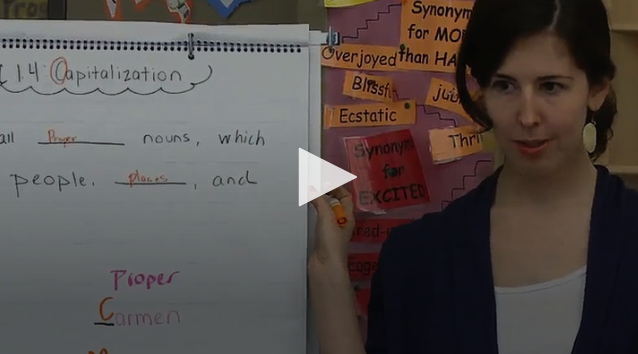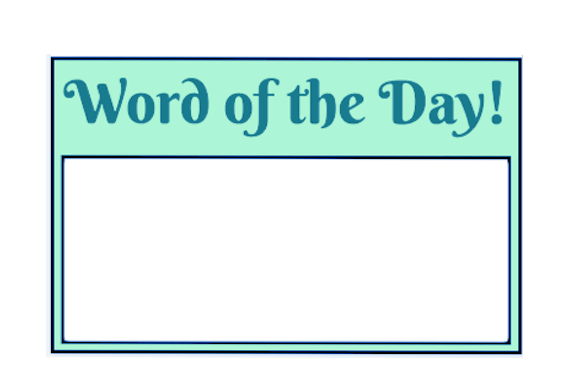In a classroom where language takes center stage, a student dealing with communication issues or dyslexia can find themselves completely lost. A single page of text can have hundreds of words, thousands of letters, and a whole world of angst for your students. If you have English language learner (ELL) students in your classroom, for them, language is the greatest barrier.

VIDEO: Ms. Noonan: Managing Transitions
In this video, Madeline Noonan has found a way to squeeze one more word into the vocabulary of her entire class. I love the whole premise of her “Word of the Day” lesson. What if that word is the tiny pebble at the top of the mountain that starts an avalanche?
Learning a new word can create a whole cascade of thinking that leads to better mastery of a language. Students begin thinking of how they use the word. They look at their own vocabulary to create a sentence where the word will fit. They think about the time and place to use such a word.
I write this post from the perspective that Ms. Noonan has invited me into her classroom to see if I could support some of her students that learn a little differently. In this case, my role is to adapt her “Word of the Day” lesson for students who are struggling.
Far too often, general education teachers step forward to create an inclusive classroom, only to find out their students don’t necessarily come with the support they need to succeed. But this post is set in a perfect world, where the teacher in an inclusive classroom can ask for help and get it — not just by having someone observe the lesson and make suggestions, but also with curricula and classroom supports. You’ll find these free supports linked in this post so you can use them in your own classroom.
Adapting The Lesson
The first thing I noticed in Ms. Noonan’s room is words. The entire room is covered with words. That makes sense in a room where learning more words is of the utmost importance, but I can see how a single word of the day could get lost in all those words. What is excellent, however, is the number of times the class returns to the “Word of the Day.” This repetition is the very best way for inclusion students to learn.
Because the repetition is in place, I looked for ways to boost it even more, but in a different way. My suggestions to Ms. Noonan would be:
- Add visual elements to her “Word of the Day” lesson.
- Since the word of the day is supposed to stand out from all the other words, I’d suggest finding a place in the room where students could write the word they chose.
To help her out, I made a “Word of the Day” poster in both English and Spanish. Once laminated, this can work as a dry erase board so students can change the word daily. By using a colorful poster, the word of the day will stand out amongst the other words posted on the wall. It also means that when a student is struggling to remember the word of the day, they have a quick reference point.

Since practice and repetition are great ways to learn vocabulary, I looked for other ways a student could keep track of these highlighted vocabulary words.
- The first is a monthly tracking sheet that can be kept in a notebook or posted on the wall, in English, Spanish, or both! This could be put right next to the word of the day poster and, before a new word is chosen, yesterday’s word could be moved over to the tracking sheet. This would again give students a quick way to recall past words of the day. If the students were to keep these in their notebooks, it would give them a reference to use for their homework and independent study.

- Finally, because quite often a student can fall behind due to poor organizational skills, I created a “Word of the Day Book” — in both English and Spanish — that students can keep in their desks or backpacks. This vocabulary builder is something students can save and keep as a reference for their future classwork.

Depending on the needs of her students, Ms Noonan now has a few choices to help solidify her word of the day lessons. Students who forget the word during class time would be able to use the poster as their quick reference. Students working at home would have all of their past words of the day in their book for a quick spelling check or to find one of the words that they’re having difficulty remembering.
In all of these cases, it’s about layering supports into the physical space of the classroom. If you have additional ideas, be sure to share them.







